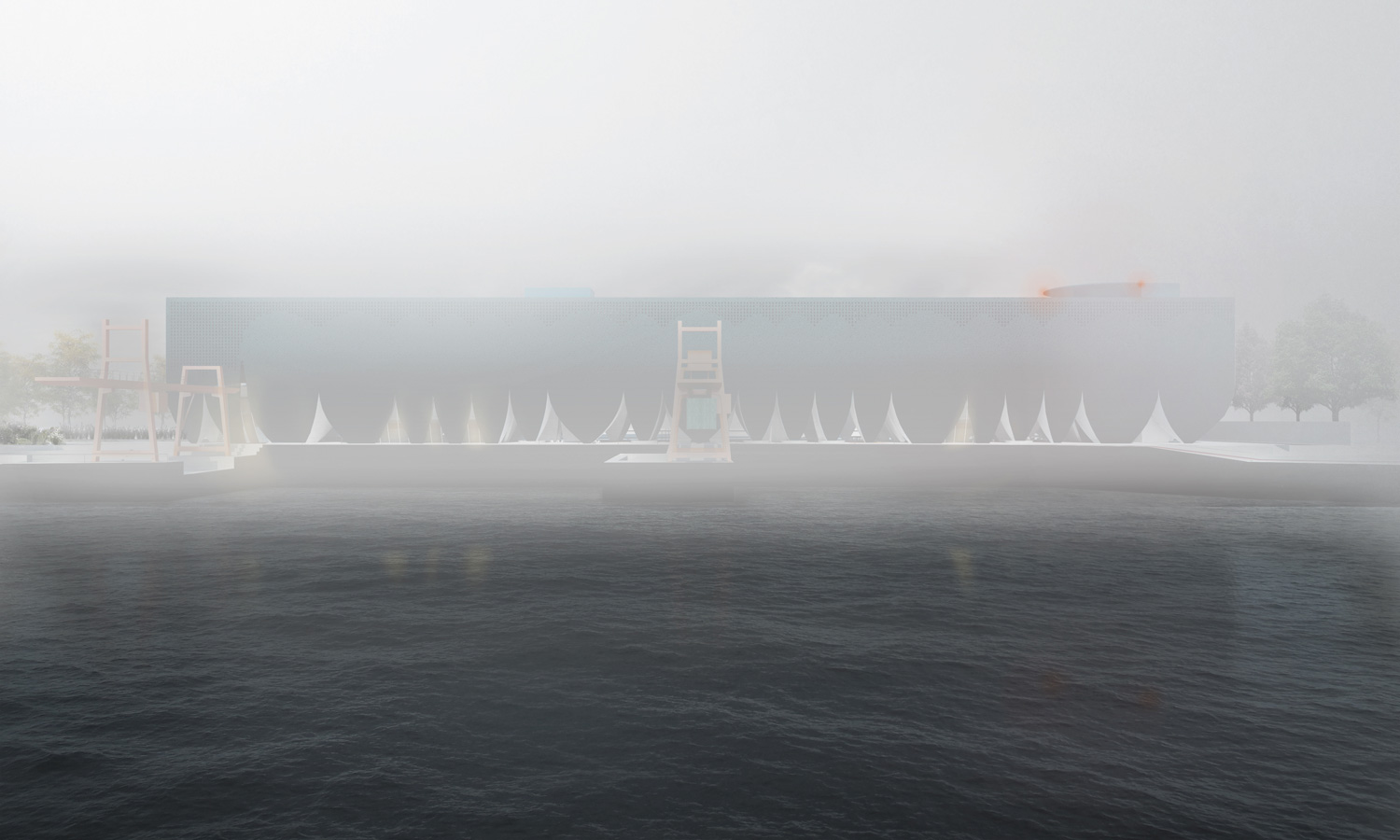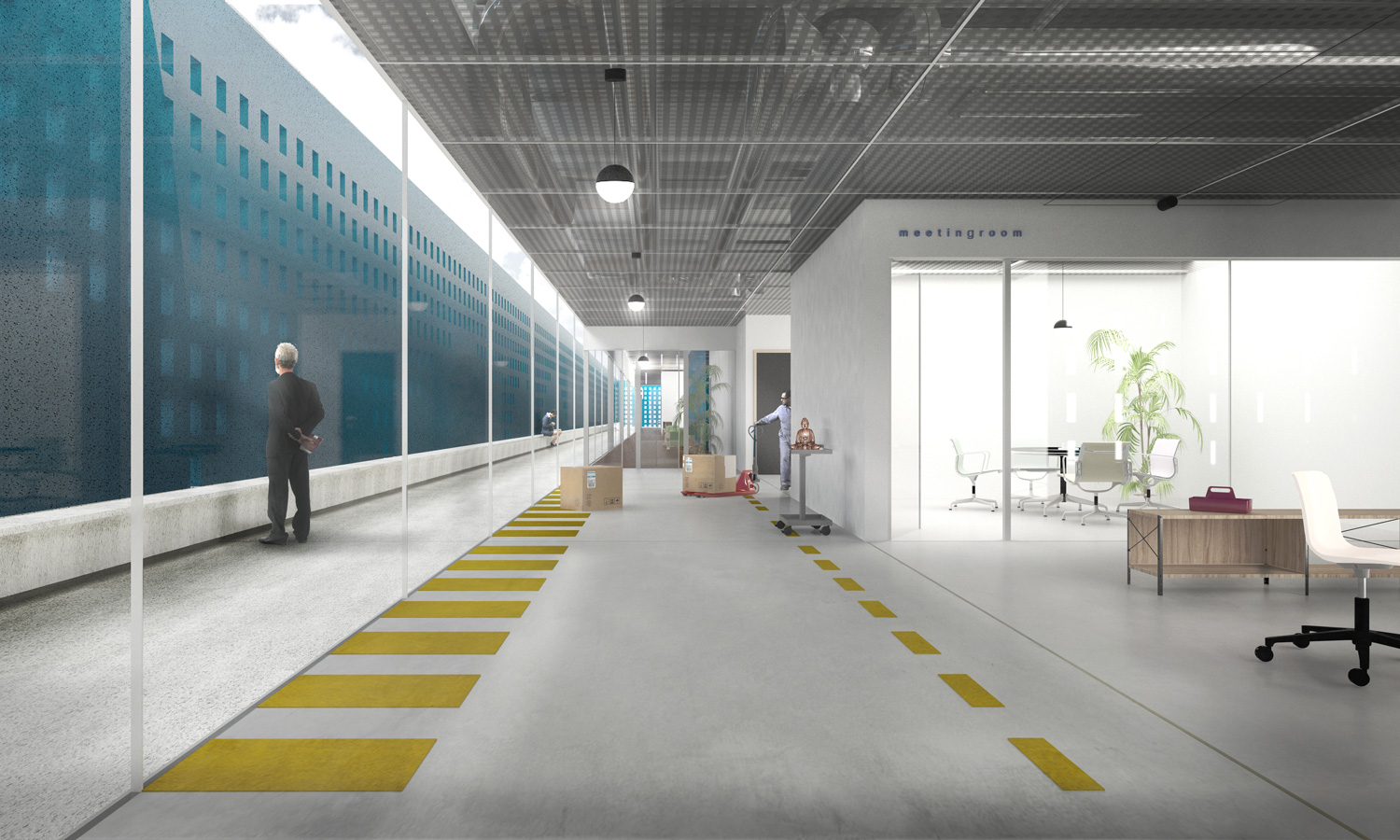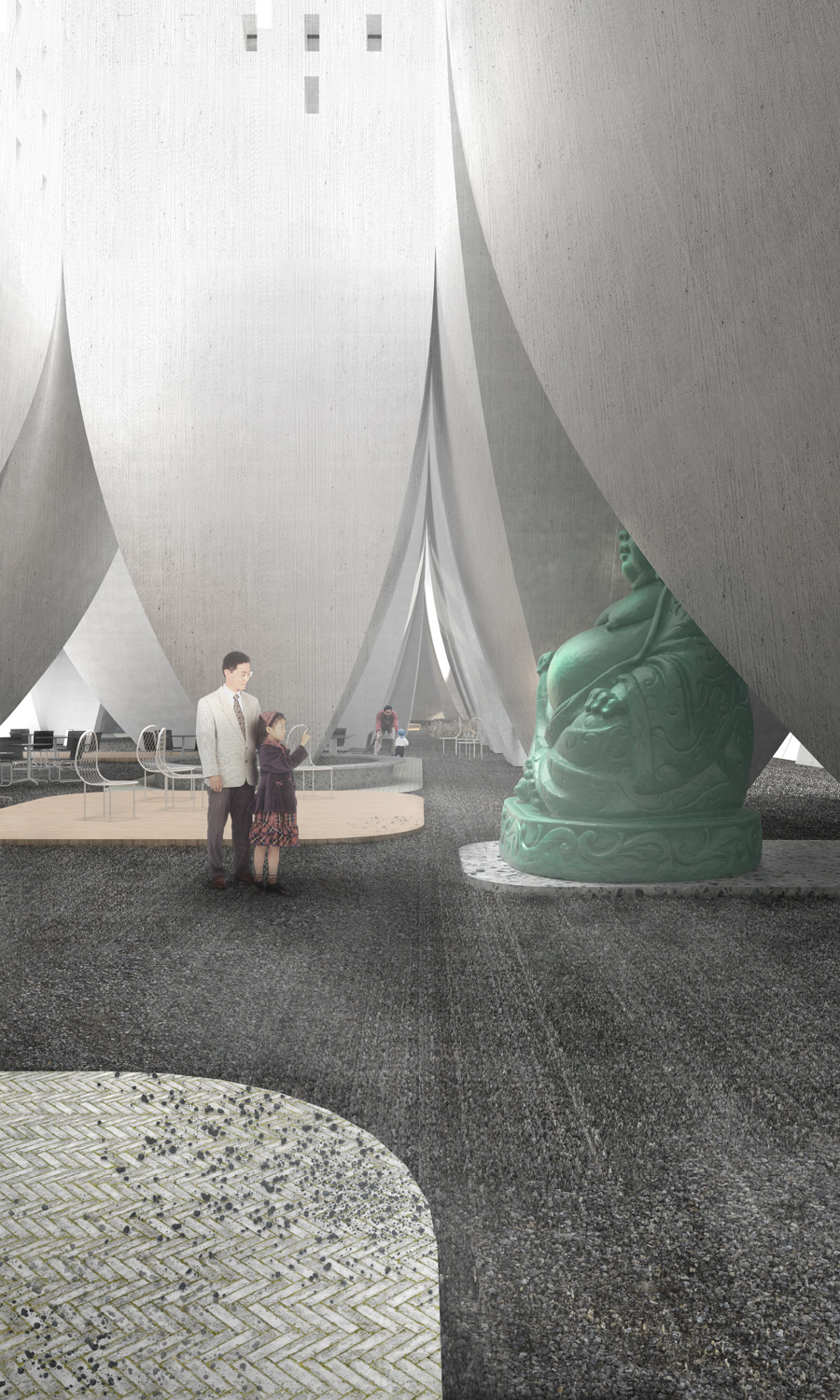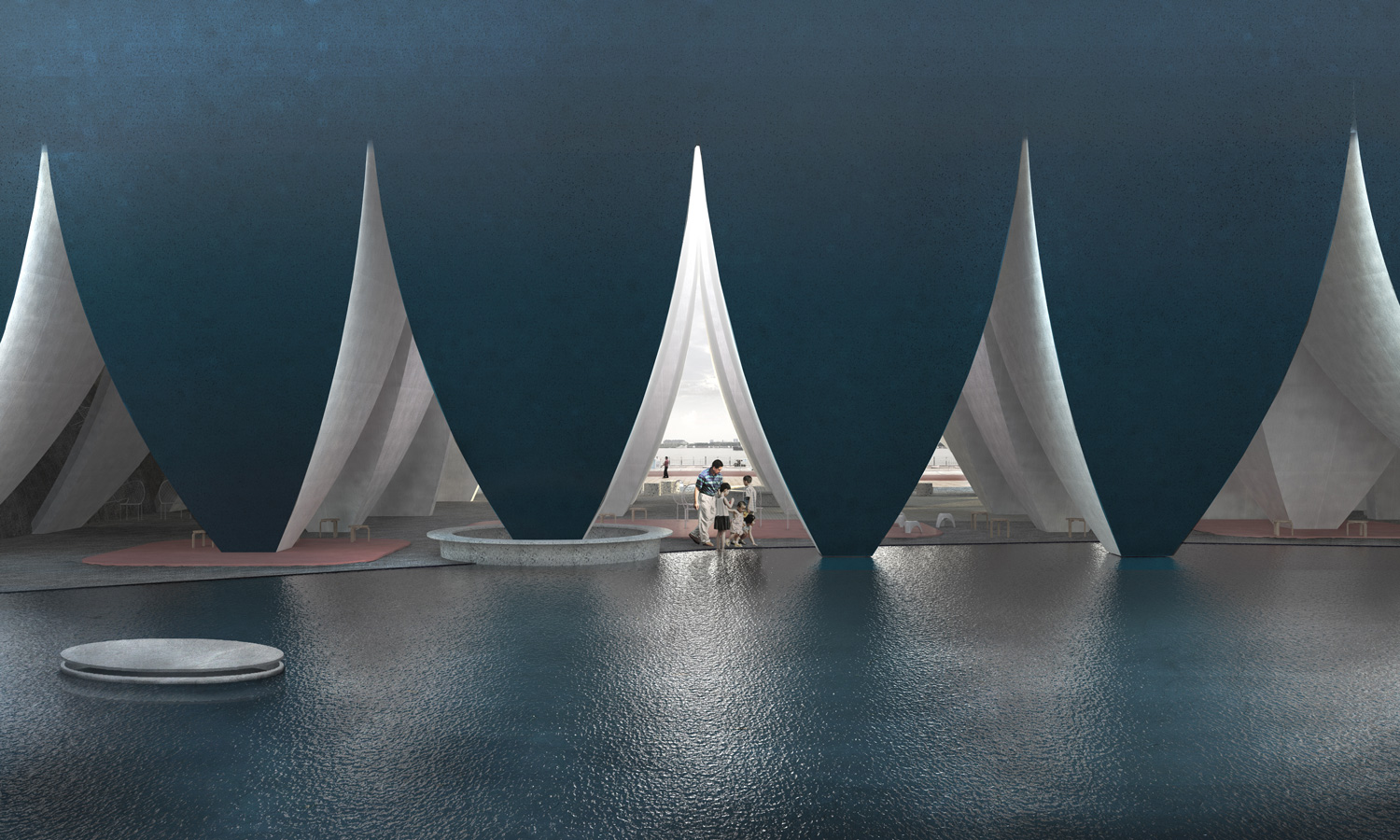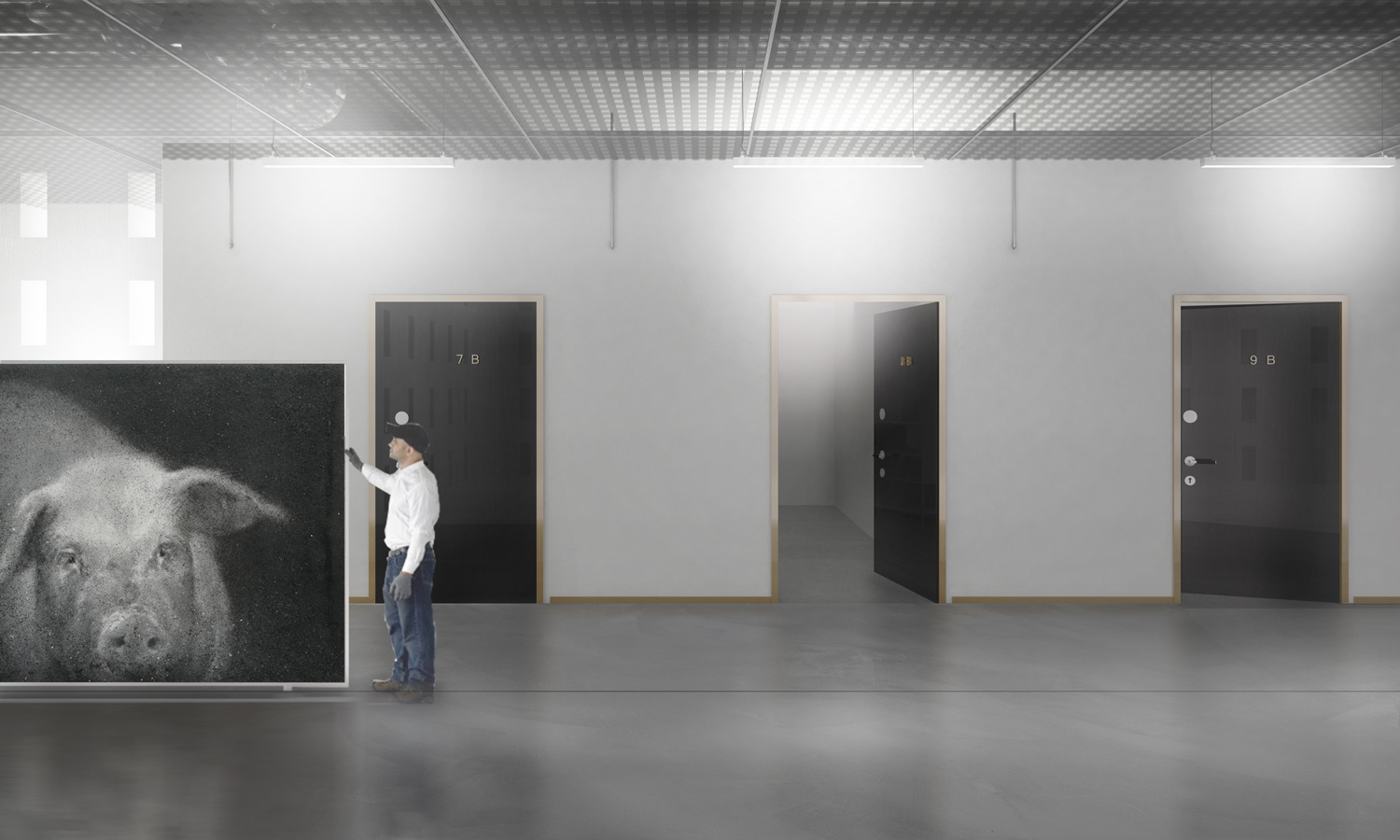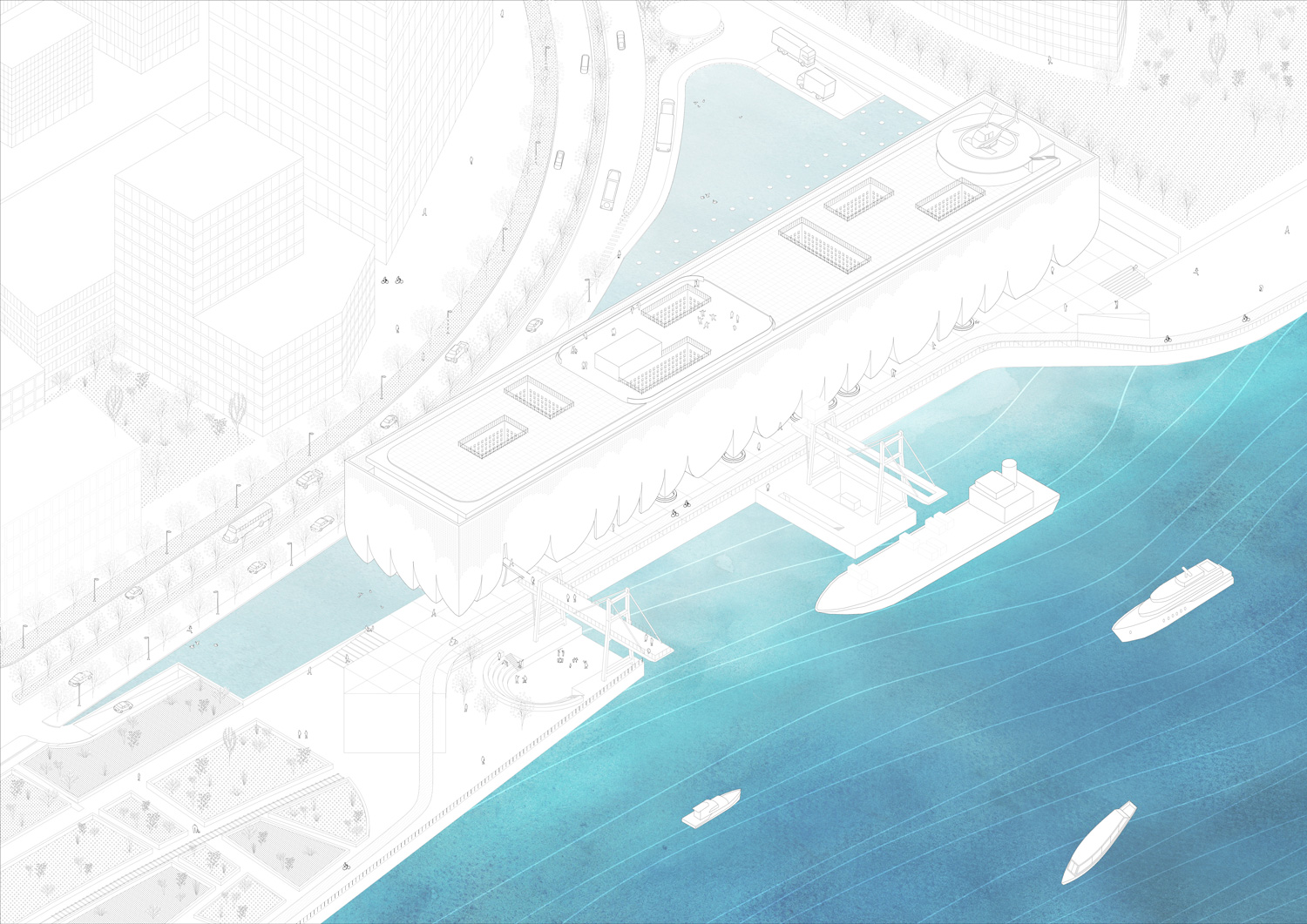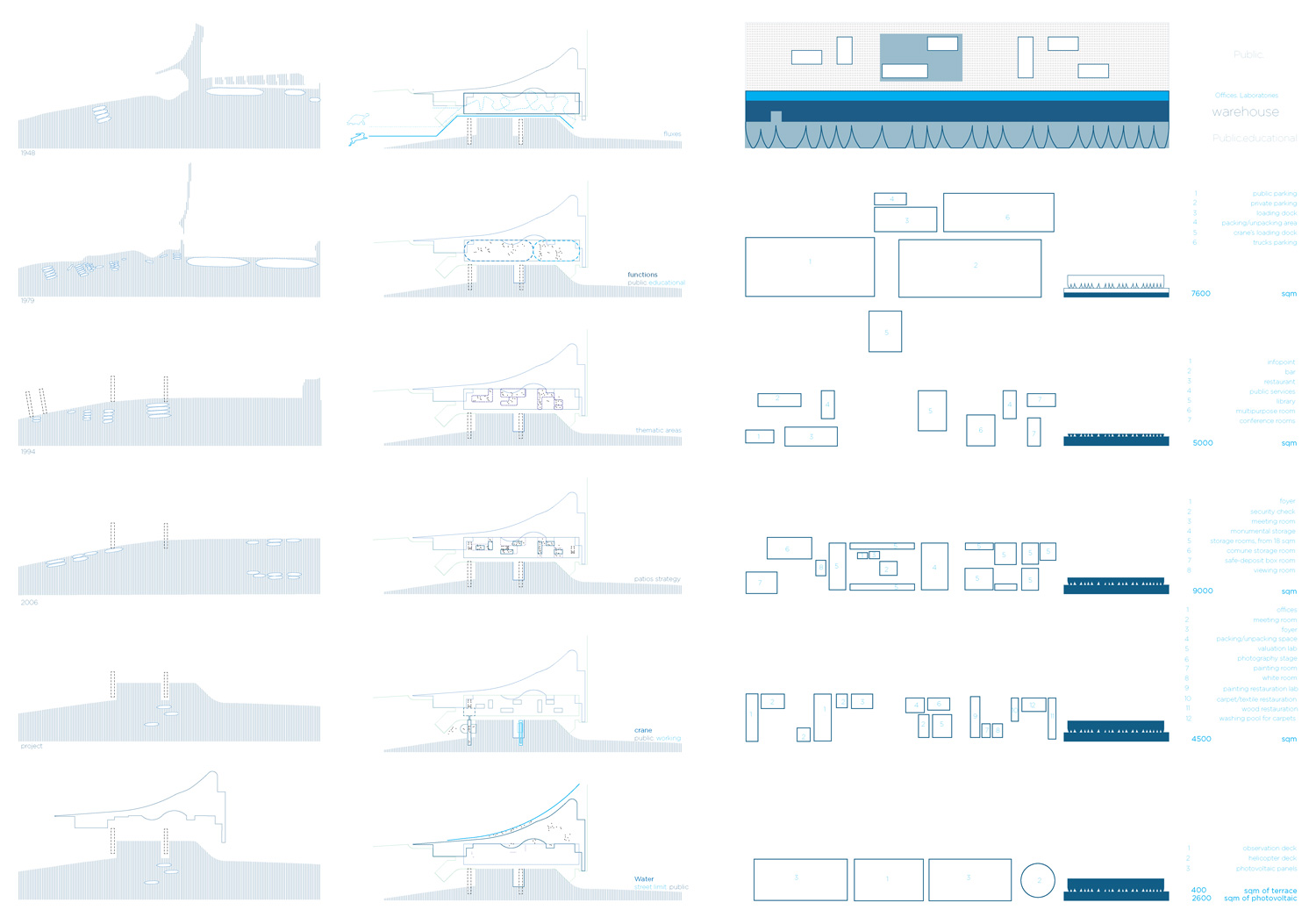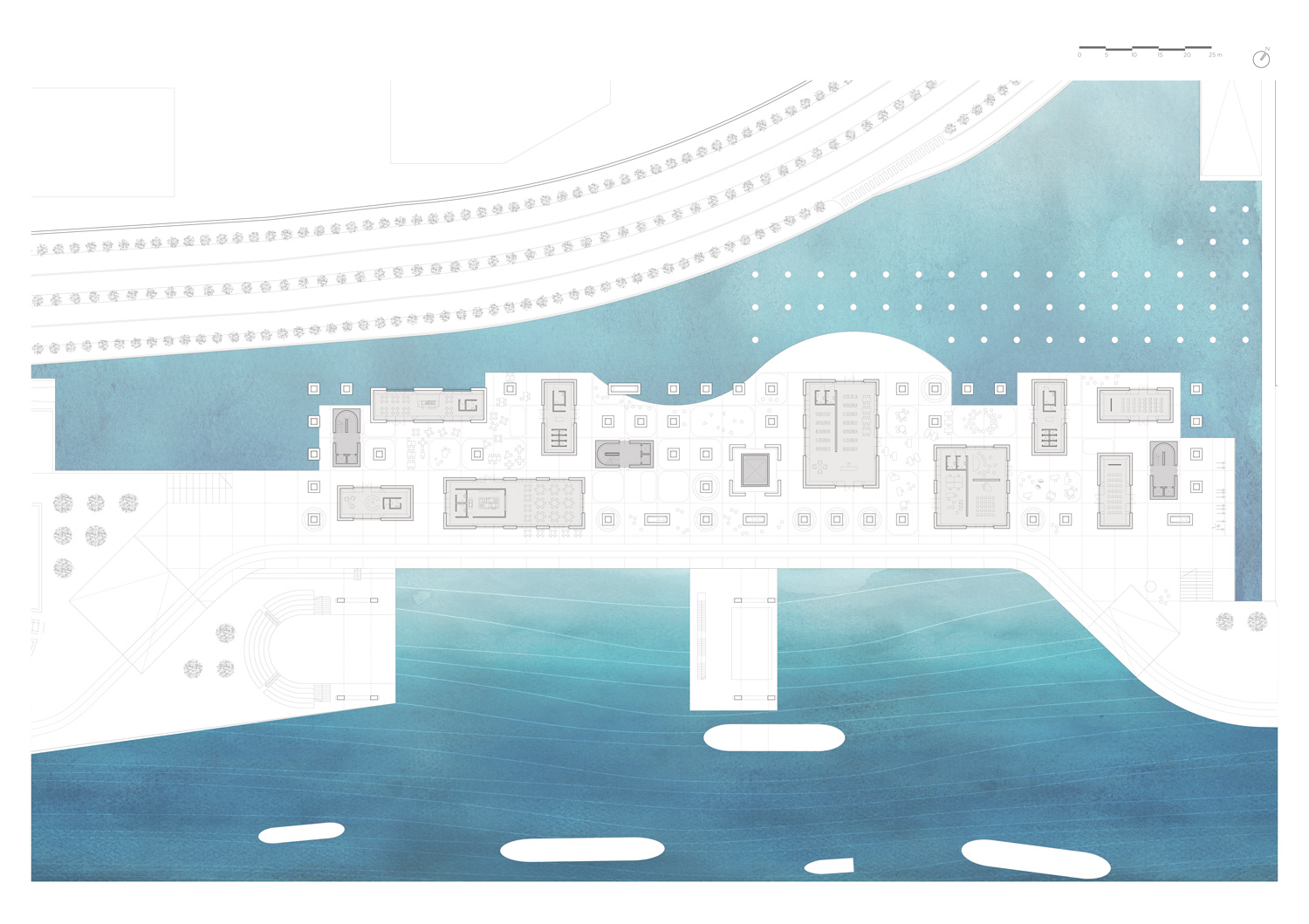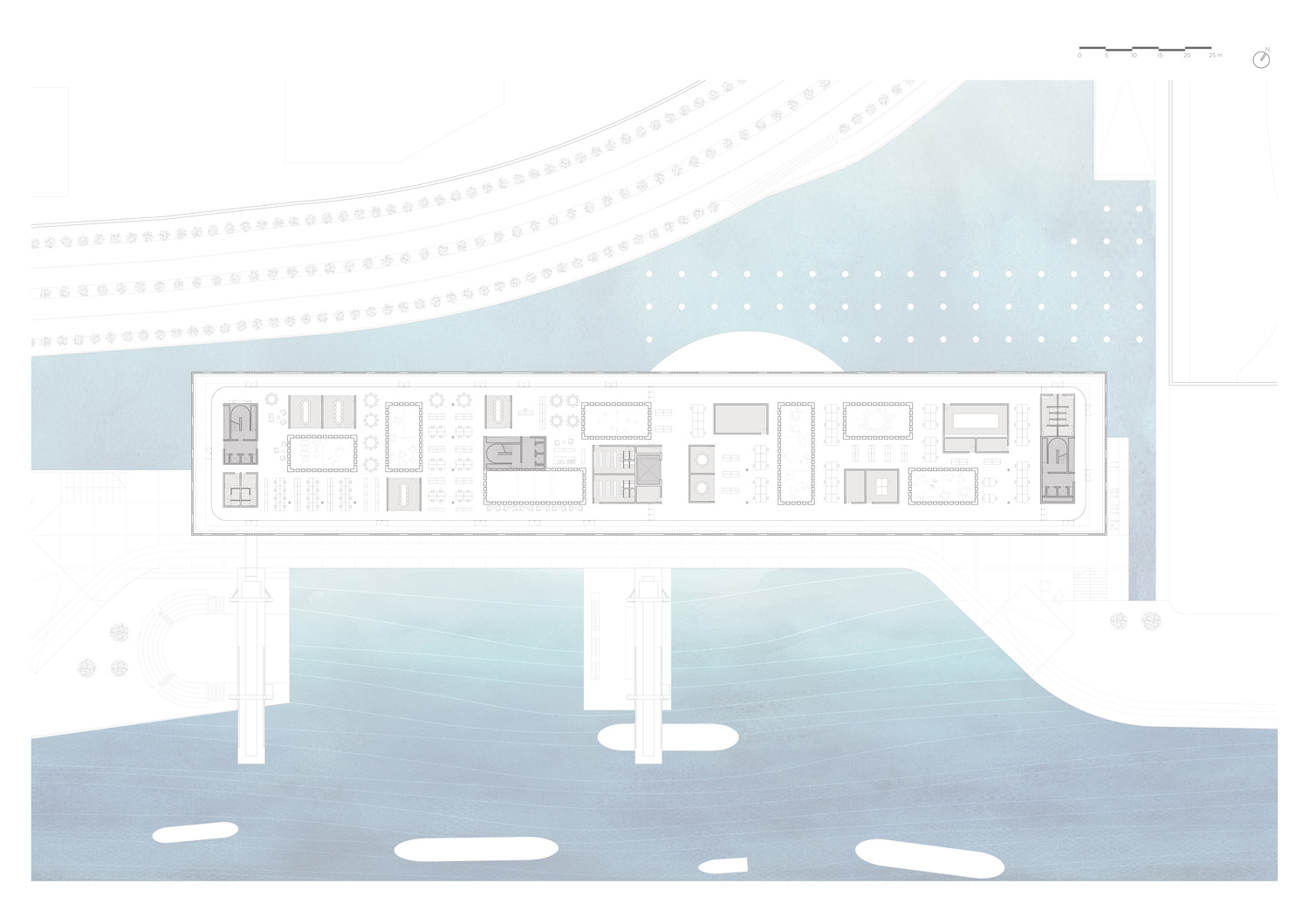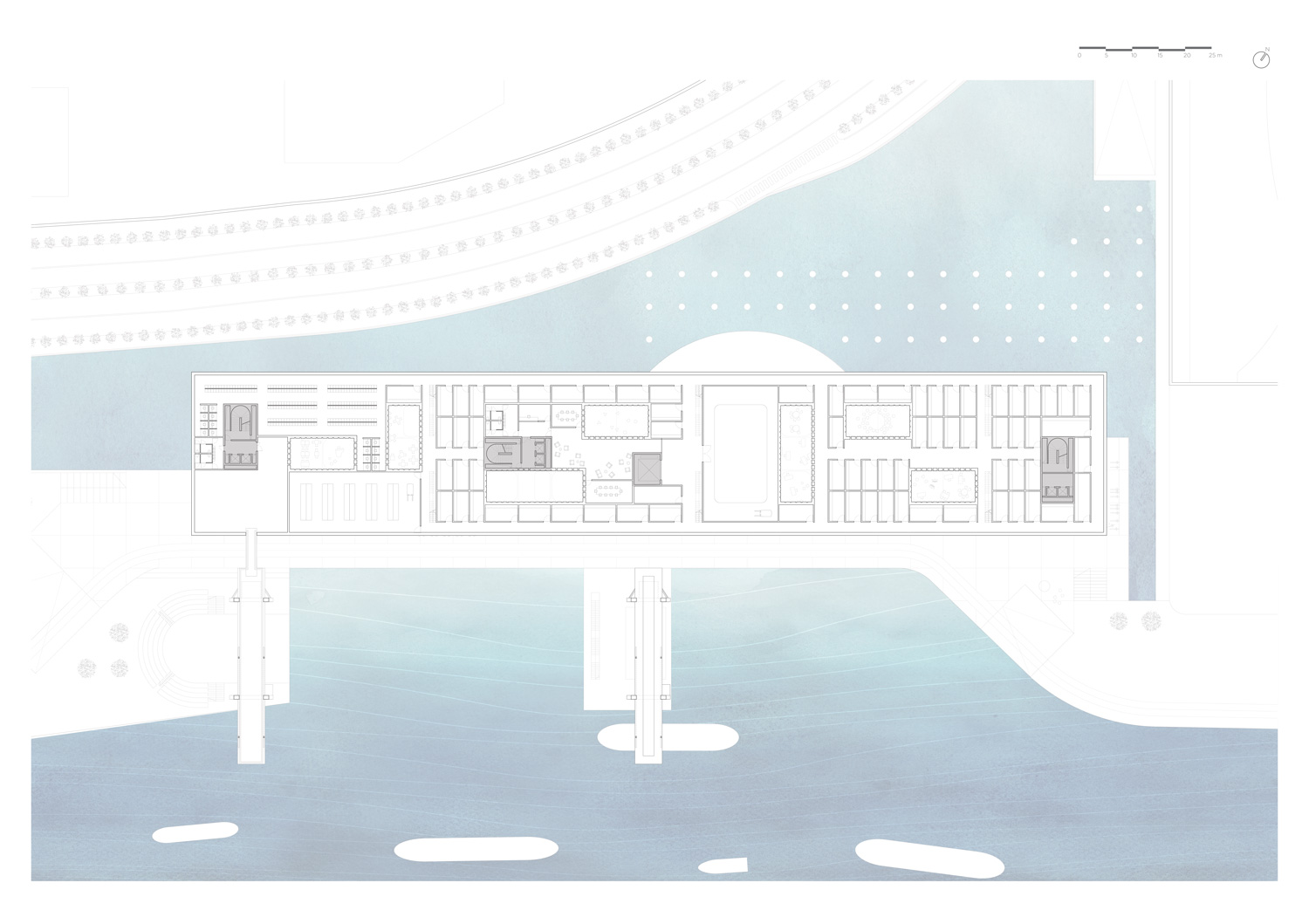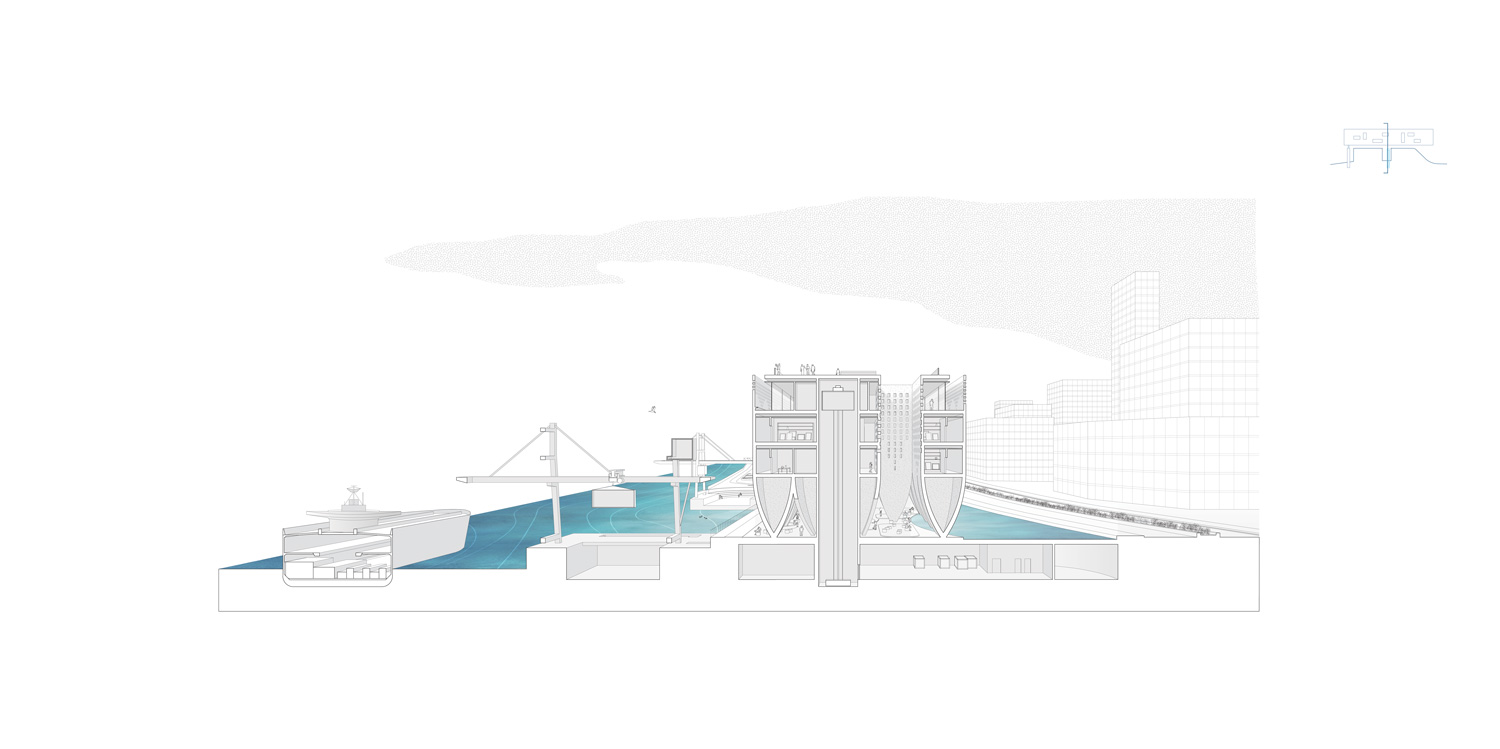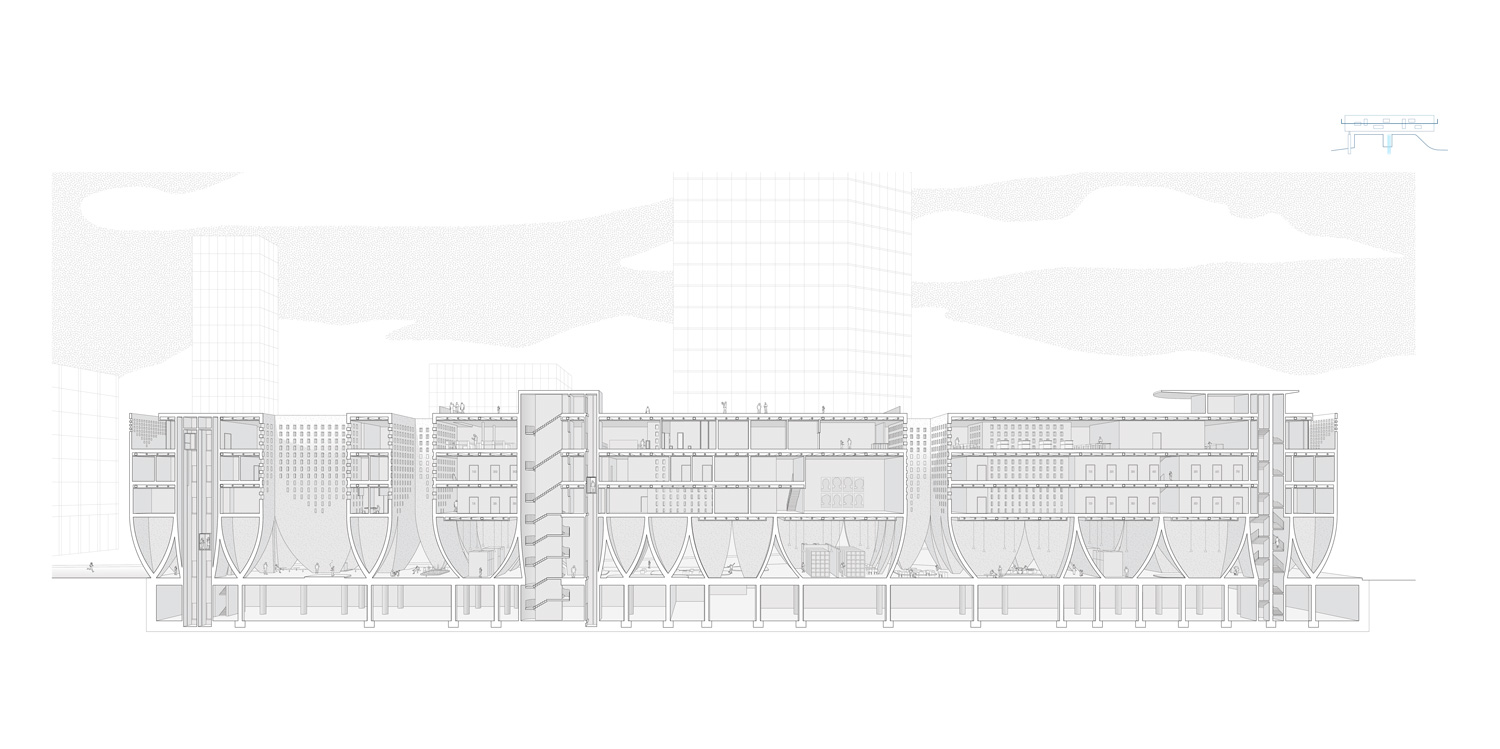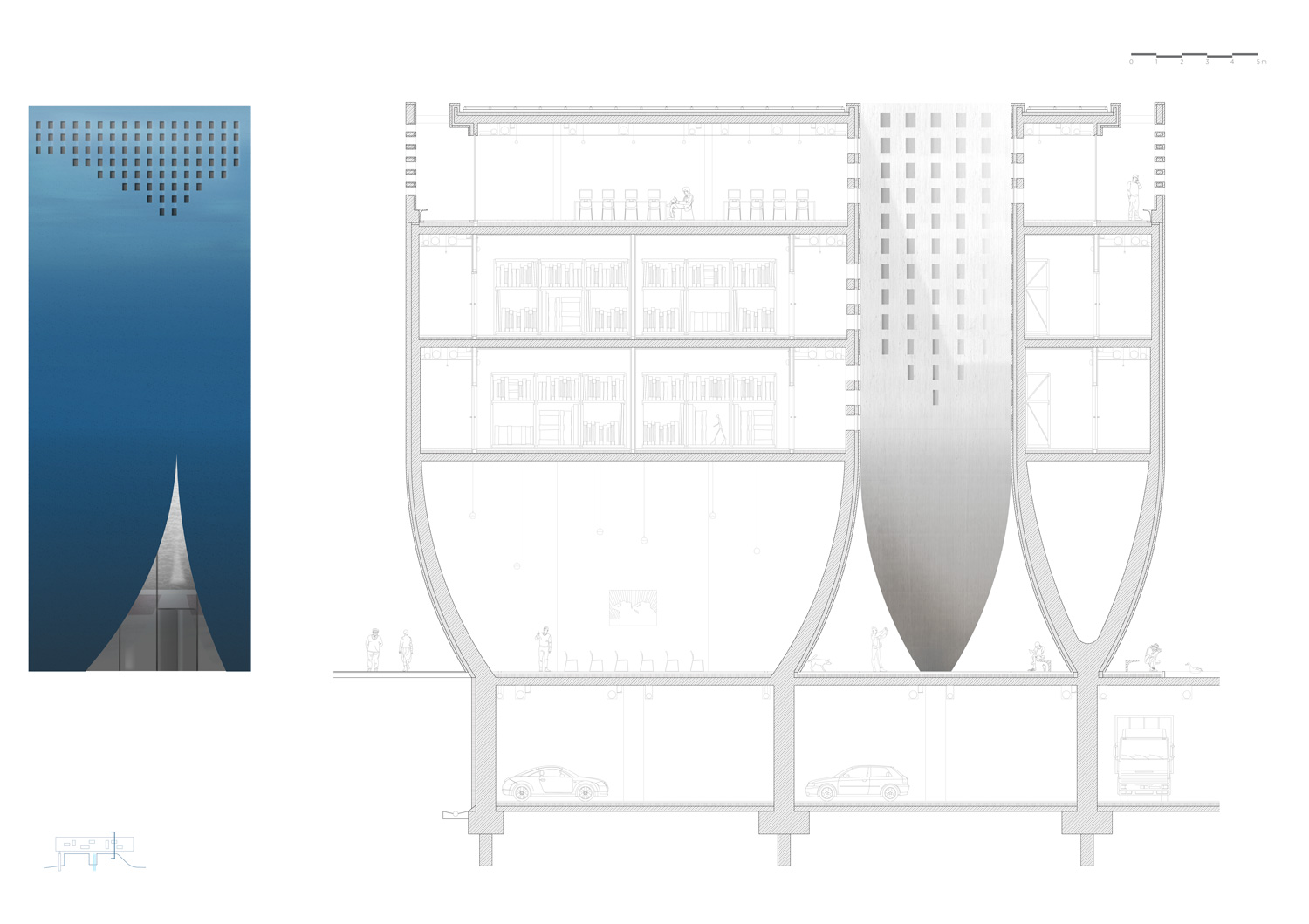☉ International Warehouse in Shanghai is a proposal by Mattia Barilani and Severino Iritano developed in 2017. It is located in Shanghai China in an urban setting. Its scale is large. Key material is concrete.
Shanghai, literally “city upon the sea”, take advantages of water since it was born. The main river across the city, has been used as the main infrastructural system for its maritime economy. Throughout years the traffic is even increased but the relation between citizens and river is indirectly proportional to that. Huangpu, the river of yellow sides, occupies an incredibly vast surface of Shanghai territory, yet detached from the daily life of Shanghai. We have been surprised in seeing that this powerful element is a stranger to the city and we wondered if the river could turn into an opportunity. The first question was how to re-link Shanghai’s dwellers with this giant infrastructural system.
The urbanization is increasing year after year, the river is still the surface where nothing it is changed. We found out that Shanghai is trying to re – established this relation through the development and the requalification of riverfront. The process of building up along the riverside is unstoppable.
Nowadays the key point area in charge of collecting this new flux of design is the West bund, an ambitious development strategy that seeks to bring domestic and foreign leaders together in the fields of culture, art, media, fashion, design, and innovative finance to create a unique, world-class waterfront. The first round of development attracted high-profile organizations and companies. In particular art-and-culture-oriented institutions such as the Long Museum, the Yuz Museum, the Shanghai Center of Photography, and the ShanghART Gallery joined into the development project.
Additionally, events including music festivals, the Biennial of Architecture and Contemporary Art, and the Art and Design Fair have helped to shape Shanghai West Bund into a center for cultural, commercial, and athletic events. The next round of development aims to leverage business clusters in West Bund to further strengthen the region’s presence in the areas of art, entertainment media, culture, and finance.
From founding art fairs and establishing private museums, to backing young galleries and young artists, China’s new generation of collectors are not just acquiring—they are fostering growth across the arts ecosystem. They have been afforded key opportunities denied to their parents. The most significant one has been access to international artists and histories through travel, communication, and, for many, studying abroad. For millennials in particular, growing up in a world connected like never before has given rise to a truly global generation.
In an interview to Kevin Ching, chief executive officer of Sotheby’s Asia, a famous international auction house, he says that the strong purchasing power of mainland Chinese buyers fueled by their increasing wealth contributes to the persistent, strong art market in recent years. The reach of Chinese collectors is now extending well beyond Hong Kong, as mainlanders have begun acquiring international art.
From these data, arose many question. One in particular attract ourselves: where this incredible power of art is stored? There might be a place where art, handcrafts and culture can be gathered? Questions brought us to launch the concept and the opportunity of designing the container of wealth. The programme became vast once we handled more information. Valuables might have the possibility of being restored. That is why we decide to insert the opportunity of a restoration programme. Restoration and conservation are the two main key activities of the design. Then, the strongbox is surrounded by small cluster of opportunities that reflects the Chinese way of living.
The project is going to take place in the west bund area, which is nowadays, link to contemporary art, but in the ancient time it had an industrial nature. Our container can host both the nature of the area where it is going to take place and the new wave of contemporary art and culture. We do not want to forget our starting point: the water has not to be negligible: it is the energy that generated our project and it dialogues with the project.
Shanghai International Art Caveau acts as the boats, as floating piece of space, a place without a place, that exists by itself, that is closed in on itself and at the same time is given over to the infinity of the sea. It is a small point where international debates might be host; a box capable of collecting the culture of the time, the “Zeitgest”, the german expression, used during romanticism, for describing the contemporary trends in terms of cultural value, costumes, social relation and most important ways of living.
